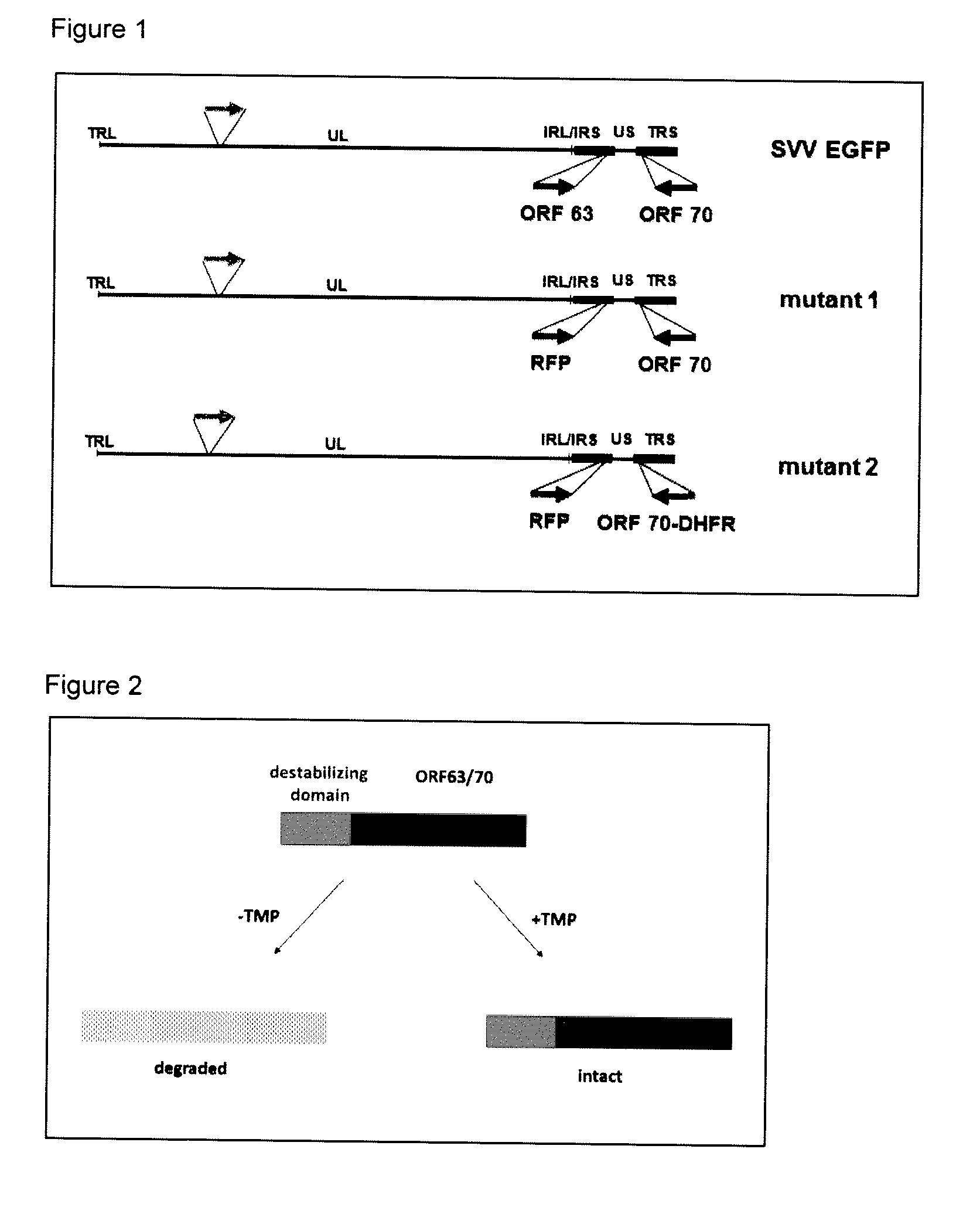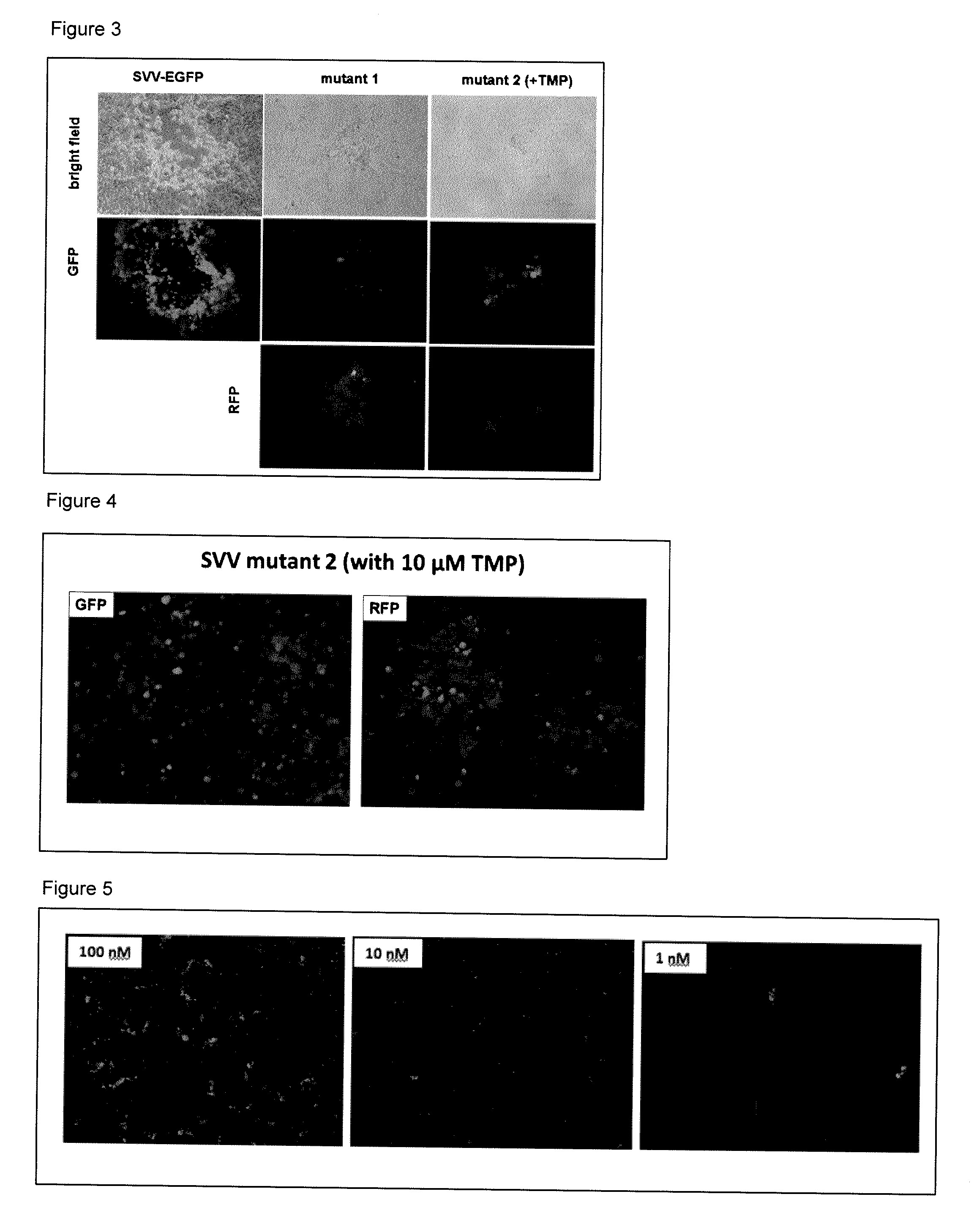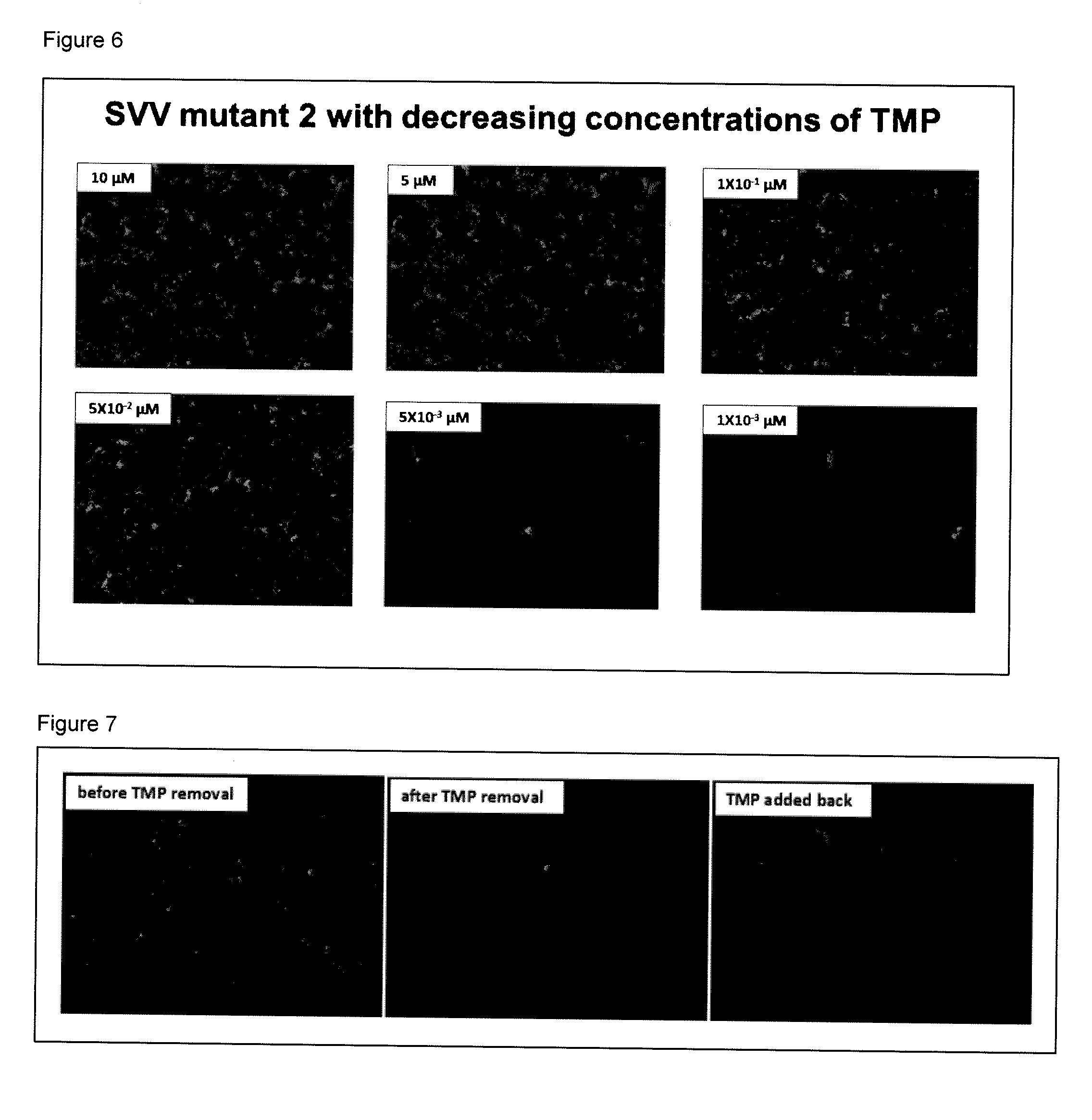Conditionally replication deficient herpes virus and use thereof in vaccines
a technology of herpes virus and conditional replication, applied in the field of vaccines, can solve the problems of no vzv reactivation in any of these models, and the injection of mice with vzv ge peptides does not produce a strong humoral immune response,
- Summary
- Abstract
- Description
- Claims
- Application Information
AI Technical Summary
Benefits of technology
Problems solved by technology
Method used
Image
Examples
example 1
Construction of Recombinant SVV BAC Clone Containing a Conditional ORF 63 / 70 Mutant
[0181]To prepare SVV ORF 63 / 70 mutants, the inventors used an SVV BAC containing the complete SVV genome and sequences that encode EGFP driven by the CMV immediate-early promoter (Gray et al., 2011). To introduce mutations into SVV ORF 63 / 70, the two-step red-mediated mutagenesis protocol developed by Tischer et al., (2006) was used.
[0182]The details of the protocol have been described (Brazeau et al., 2011). Briefly, as shown in FIG. 1 we prepared 2 SVV mutant BACs using an SVV BAC containing EGFP-tagged SVV genome (SVV-EGFP). In mutant 1, SVV ORF 63 was replaced with red fluorescent protein. In mutant 2, in addition to deletion of SVV ORF 63, ORF 70 was fused at the N-terminus with a destabilizing domain (purple line) that, upon translation, will lead to degradation of ORF 70 protein. This is also shown schematically in FIG. 2.
[0183]More specifically, to prepare mutant 1, a recombinant clone was use...
example 2
Preparation of Infectious Recombinant SVV from BAC Clones
[0186]This example relates to the experiments depicted in FIG. 3. This figure shows the preparation of SVV ORF 63 / 70-conditional mutant virus. As described below, BACs contacting SVV-EGFP, mutants 1 and 2 (FIG. 1) were transfected into Vero cells. TMP (10 μM) was introduced after transfection of mutant 2 BAC. The bright field images of the CPE associated with the viruses were then evaluated wherein the expression of GFP and RFP associated with the CPE were visualized by green and red fluorescence.
[0187]The experiments revealed that the transfection of SVV BAC containing EGFP into Vero (African monkey kidney) cells in culture produced a cytopathic effect (CPE) that was visualized by the expression of green fluorescence (FIG. 2; SVV-EGFP). Transfection of SVV BAC containing EGFP and RFP in place of ORF 63 (mutant 1) into Vero cells in culture produced a CPE that was visualized by both green and red fluorescence (FIG. 3; mutant 1...
example 3
Minimum Quantity of TMP Needed for Productive Replication of Mutant 2
[0190]Vero cells were infected with mutant 2 in the presence of 10-fold dilutions of TMP. Replication of mutant 2 was monitored by GFP expression (FIG. 5). Active replication of mutant 2 was seen in medium containing 100 and 10 nM TMP. However, no virus replication was seen at 1 nM TMP. Thus, the minimum quantity of TMP needed for replication of mutant 2 is 10 nM. In these experiments the effect of the quantity of TMP on replication of SVV mutant 2 and the infection of Vero cells with SVV mutant 2 was done at 100, 10 and 1 nM of TMP in the tissue culture medium. GFP expression was monitored using an inverted microscope. The results showed that virus-specific CPE was present at 100 and 10m nM TMP but not at 1 nM TMP. In addition, the experiments contained in FIG. 6 with decreasing amounts of TMP show that the lowest amount of TMP that can be used with SVV mutant 2 is 5×10−2 μM.
PUM
| Property | Measurement | Unit |
|---|---|---|
| diameter | aaaaa | aaaaa |
| red fluorescent polypeptide | aaaaa | aaaaa |
| time | aaaaa | aaaaa |
Abstract
Description
Claims
Application Information
 Login to View More
Login to View More - R&D
- Intellectual Property
- Life Sciences
- Materials
- Tech Scout
- Unparalleled Data Quality
- Higher Quality Content
- 60% Fewer Hallucinations
Browse by: Latest US Patents, China's latest patents, Technical Efficacy Thesaurus, Application Domain, Technology Topic, Popular Technical Reports.
© 2025 PatSnap. All rights reserved.Legal|Privacy policy|Modern Slavery Act Transparency Statement|Sitemap|About US| Contact US: help@patsnap.com



